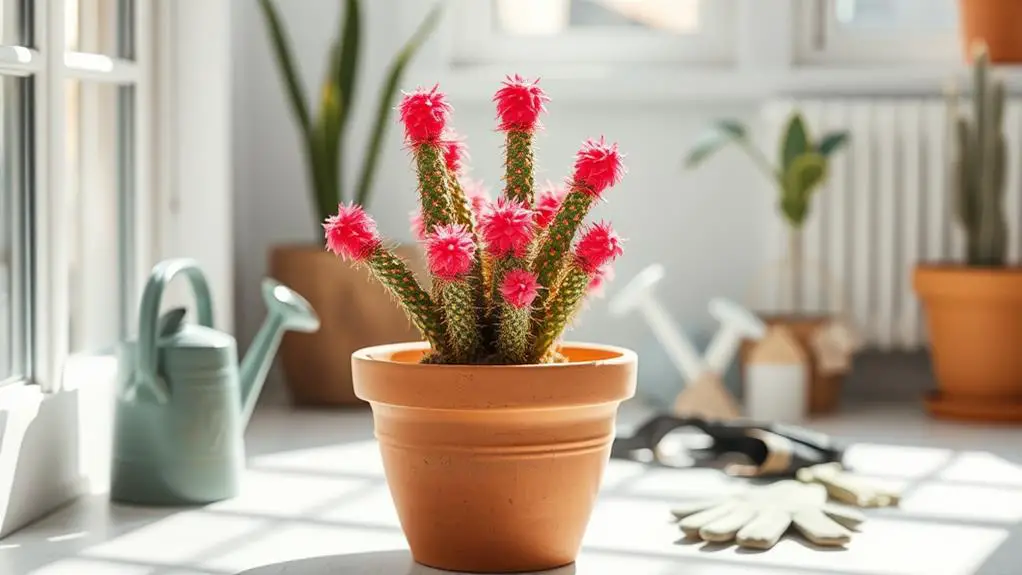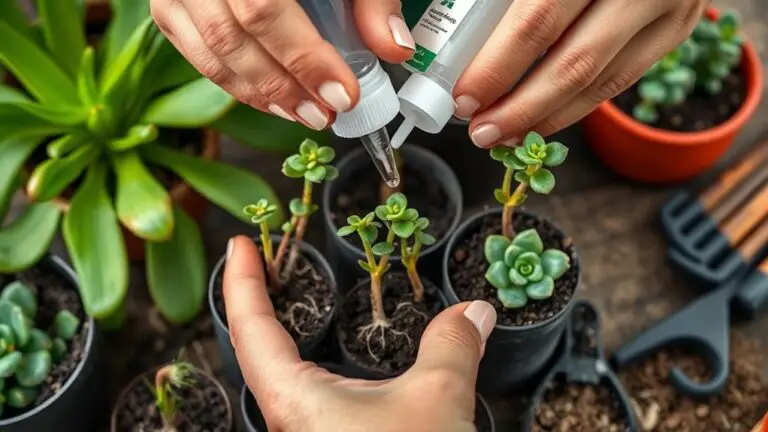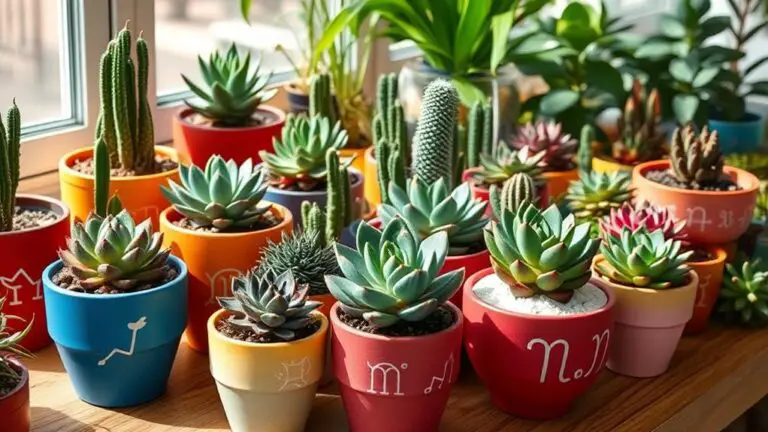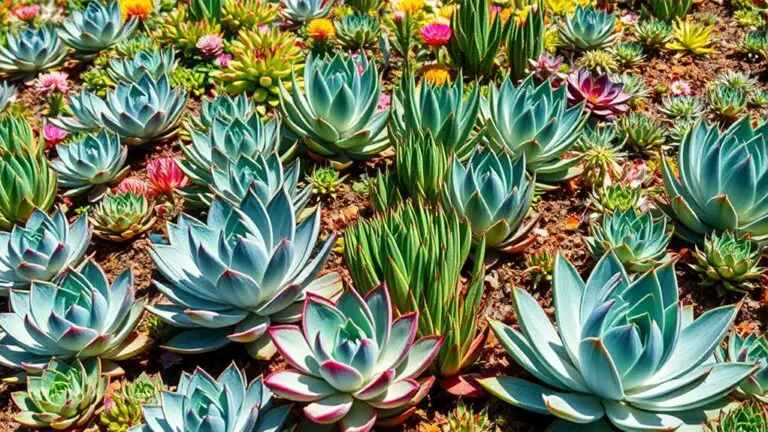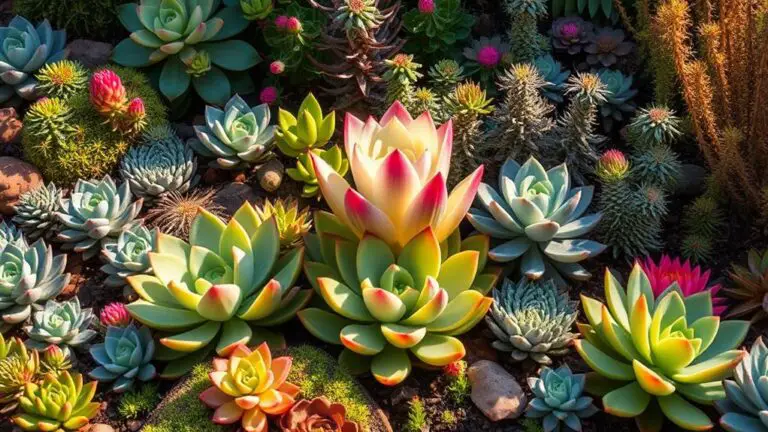5 Essential Steps for Coral Cactus Care
Caring for a Coral Cactus might seem challenging at first, but breaking it down into five essential steps can make the process straightforward and manageable. You'll need to start by ensuring your plant gets the right amount of sunlight, which means finding that sweet spot of bright, indirect light. Next, mastering the art of watering is vital, and the Drench and Dry Method can be a game-changer. But what about the ideal soil mix and regular maintenance? And how do you handle pests? Let's explore each step in detail to help your Coral Cactus thrive.
Provide Proper Sunlight
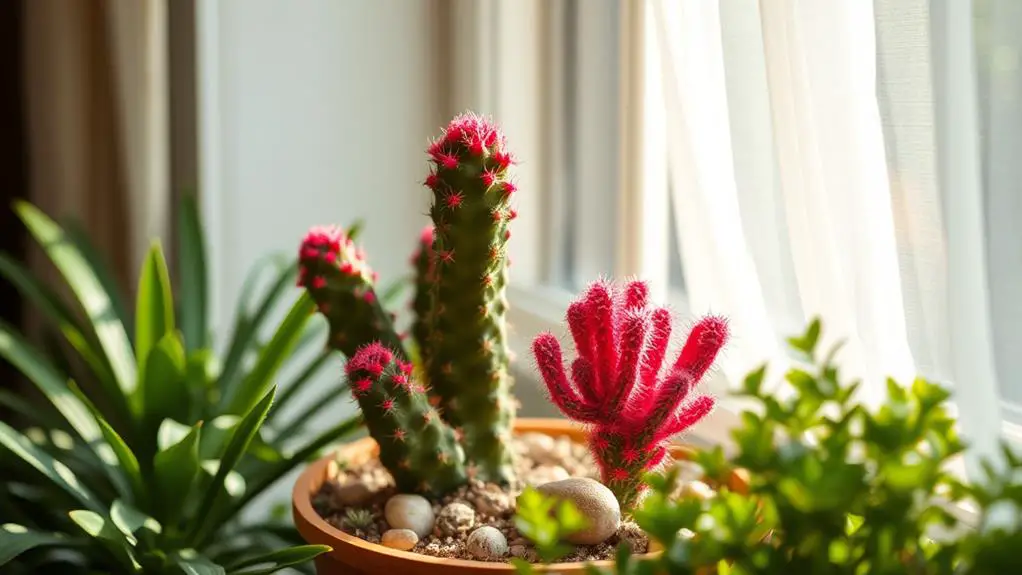
When it comes to providing proper sunlight for your Coral Cactus, guaranteeing bright, indirect light is key to its health and growth. Your Coral Cactus needs at least 4 hours of sunlight daily for peak growth, but it's important to avoid direct sunlight, especially during peak sun hours.
Direct afternoon sunlight can cause sunburn, leading to yellowing leaves and other damage. To help your plant thrive, place it in bright, indirect light. If it's outdoors, partial shade is best during the hottest parts of the day.
Indoors, a spot near a window that gets plenty of light but not direct sunlight works well. Gradually acclimate new plants to increased light exposure. Start with about an hour of morning sunlight and slowly increase to a maximum of 4 hours daily. This helps prevent scorching.
Keep an eye on your Coral Cactus's appearance. Wrinkled stems may indicate insufficient light, while yellowing leaves can suggest too much direct sunlight. Adjust the light accordingly to maintain a healthy balance.
Master Watering Techniques
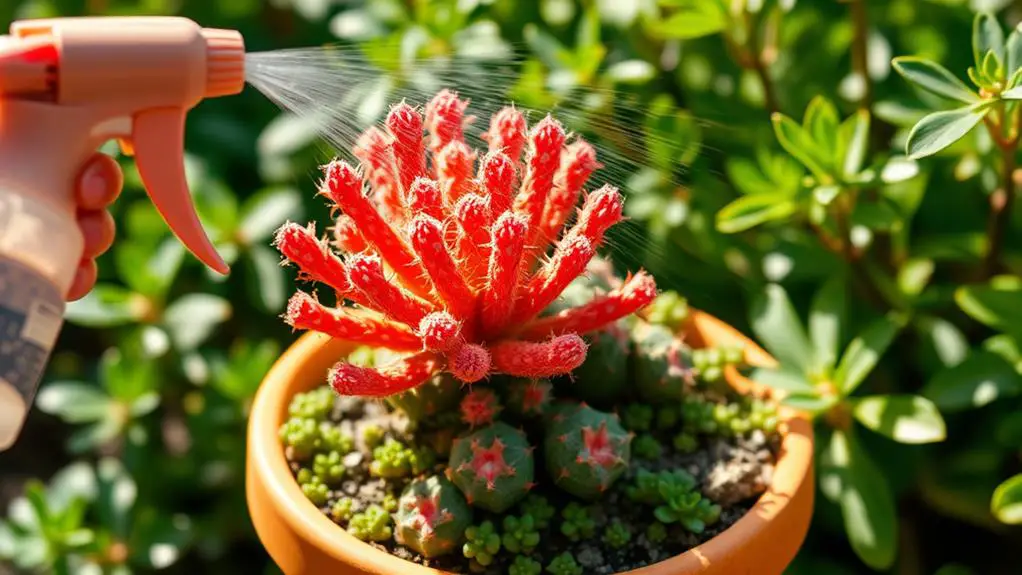
Mastering the watering techniques for your Coral Cactus is vital to its overall health and significance. To keep your cactus thriving, follow a few key guidelines to guarantee the right balance of moisture and dryness.
- Drench and Dry Method: Water your Coral Cactus only when the top 2-4 inches of soil are completely dry. This "drench and dry" strategy means soaking the soil thoroughly and then letting it dry out completely before the next watering. This prevents root rot and maintains ideal moisture levels.
- Seasonal Adjustments: During the growing season, your cactus will need more frequent watering. However, in the winter months, reduce the frequency since the plant is dormant. The soil should dry out more slowly during this time.
- Watch for Signs: Monitor your Coral Cactus for signs of dehydration, like shriveled or wrinkled stems. If you notice these, adjust your watering schedule to provide the necessary hydration without causing root rot.
- Proper Drainage: Always use containers with ample drainage holes to avoid waterlogged soil. Well-draining soil is essential to prevent root rot and promote good air circulation around the roots.
Ensure Ideal Soil Conditions
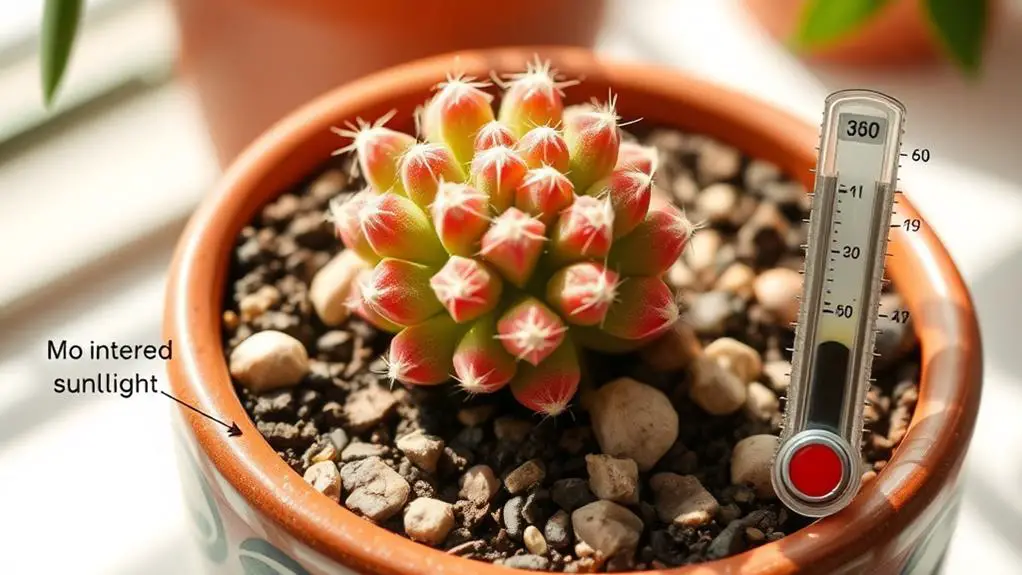
Your Coral Cactus's health largely depends on the soil it's planted in, so ensuring ideal soil conditions is essential. You need well-draining soil to prevent root rot. A mix of potting soil, perlite, and coarse sand works best. Regular potting soil holds too much moisture, which can lead to overwatering problems. Instead, use a specialized cactus potting mix to keep your plant healthy.
Ensure your container has ample drainage holes. These holes let excess water escape, promoting healthy root growth. Always monitor soil moisture by checking the top 2-4 inches. Only water when the soil feels dry to the touch. This approach helps prevent overwatering and keeps your cactus thriving.
Environmental conditions also play a role. In hot climates, adding more perlite or sand can improve drainage. This adjustment helps the soil to dry more quickly, reducing the risk of root rot.
Prevent and Treat Issues
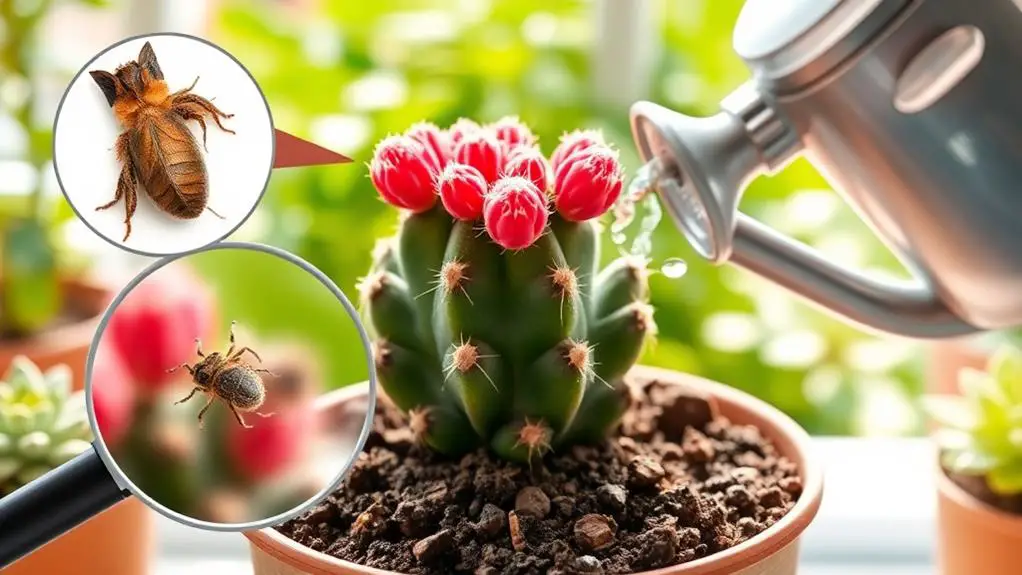
To keep your Coral Cactus healthy, it's important to regularly inspect it for common issues and act quickly when problems arise. Taking these proactive steps will help you maintain the plant health and beauty of your Coral Cactus.
- Check for pests: Inspect your Coral Cactus for mealybugs and scale insects. If you spot any, treat the infestation promptly with rubbing alcohol to protect your plant.
- Avoid overwatering: Overwatering can cause yellowing leaves and root rot. Make sure the soil dries completely between waterings. If you notice browning at the top, reduce watering and improve drainage immediately.
- Monitor sunlight exposure: Curled leaves and brown edges often mean your Coral Cactus is getting too much sunlight. Adjust its position to make certain it receives the right amount of light without being scorched.
- Consult for yellowing leaves: If you see yellowing leaves despite proper care, the issue might be pests, overwatering, or nutrient deficiencies. Don't hesitate to consult a gardening expert for a proper diagnosis.
Regularly checking and adjusting your Coral Cactus's care routine will help you prevent and treat common issues, making certain your plant thrives and remains a stunning addition to your home.
Regular Maintenance and Care
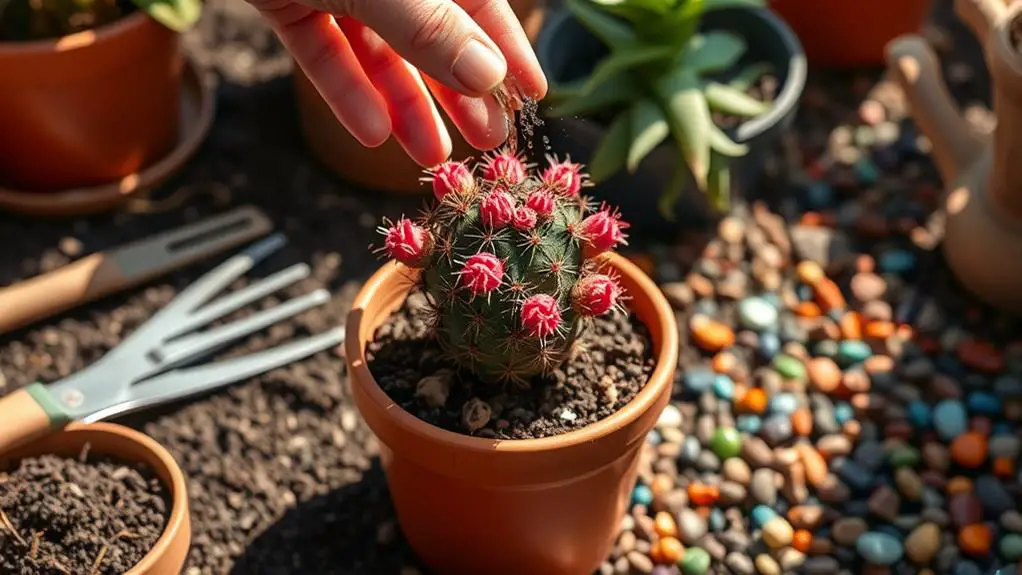
After addressing common issues, focus on regular maintenance and care to keep your Coral Cactus thriving.
Start by ensuring it gets at least four hours of direct sunlight daily. This helps your plant maintain healthy growth. Rotate the pot regularly so all sides receive even sunlight exposure.
Water your Coral Cactus using the "soak and dry" method. Let the top 2-4 inches of soil dry out completely between waterings. This prevents root rot. Make sure the pot has a good drain and is filled with well-draining soil. A mix of potting soil, perlite, and coarse sand works best.
Fertilize every 6-8 weeks during spring and summer with a balanced general fertilizer at half strength. Stop fertilizing in the fall and winter as the plant's growth slows down.
Keep an eye out for pests like mealybugs and scale insects. If you notice any, treat them promptly with rubbing alcohol.
Regularly checking your plant will help catch any problems early.
Frequently Asked Questions
How to Take Care of a Coral Cactus?
To care for a coral cactus, provide bright, indirect sunlight for 4 hours daily, water when the topsoil is dry, use well-draining soil, maintain temperatures between 60-85°F, and fertilize every 6-8 weeks during the growing season.
Do Coral Cacti Like to Be Root Bound?
No, coral cacti don't like to be root bound. Make sure you repot them every 3-4 years in a slightly larger container. Look for signs like stunted growth or roots emerging from drainage holes as indicators.
How Much Sun Does a Coral Cactus Need?
Your Coral Cactus needs at least 4 hours of direct sunlight daily, ideally in the morning. Place it in bright, indirect light and avoid prolonged afternoon sun to prevent sunburn. Gradually increase exposure to new light conditions.
How to Save a Rotting Coral Cactus?
To save a rotting coral cactus, trim away mushy roots with sterilized tools, let cut areas dry out for a few days, then repot in well-draining soil. Water sparingly, allowing the soil to dry completely between waterings.
Conclusion
Taking care of your Coral Cactus isn't hard if you follow these steps. Give it the right light, water it properly, use the best soil mix, keep an eye out for pests, and fertilize during the growing season. With a little attention, your Coral Cactus will thrive. You've got this! Gardening can be a fun and rewarding experience, and your plant will thank you with its healthy, beautiful appearance. Happy gardening!

